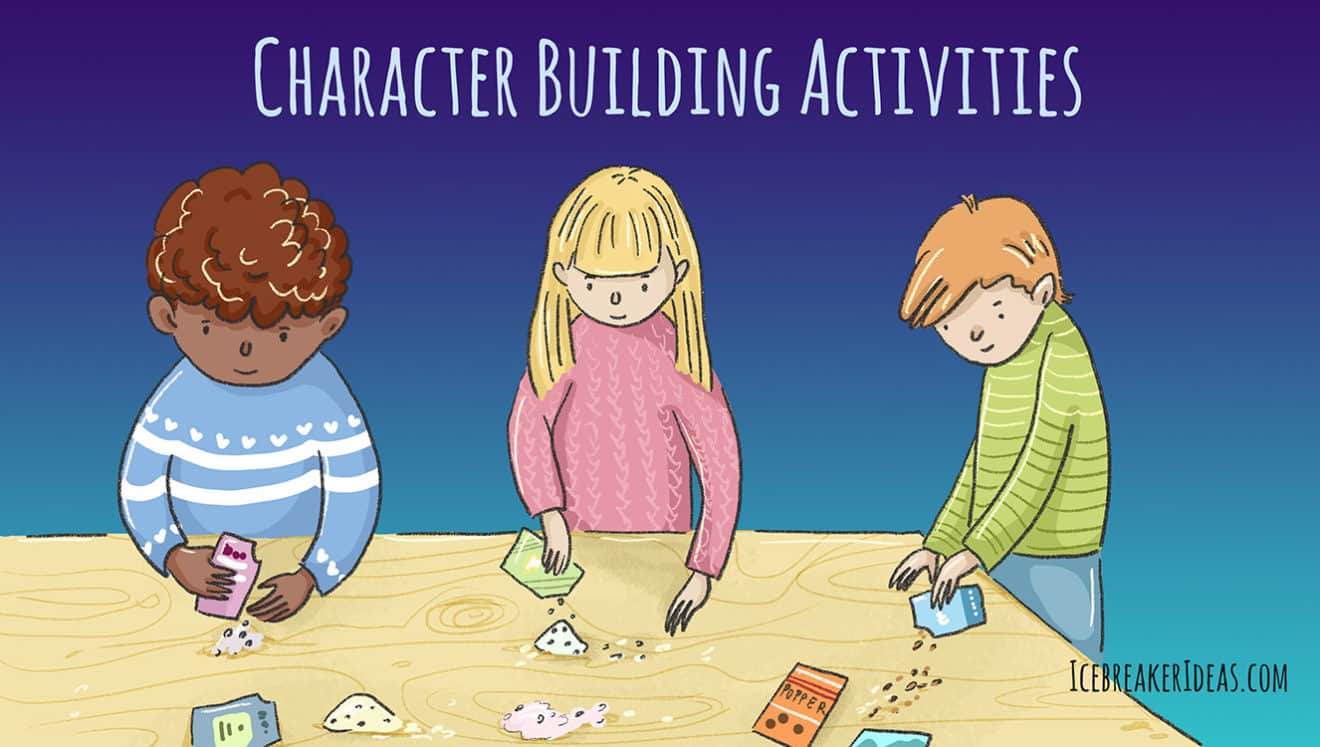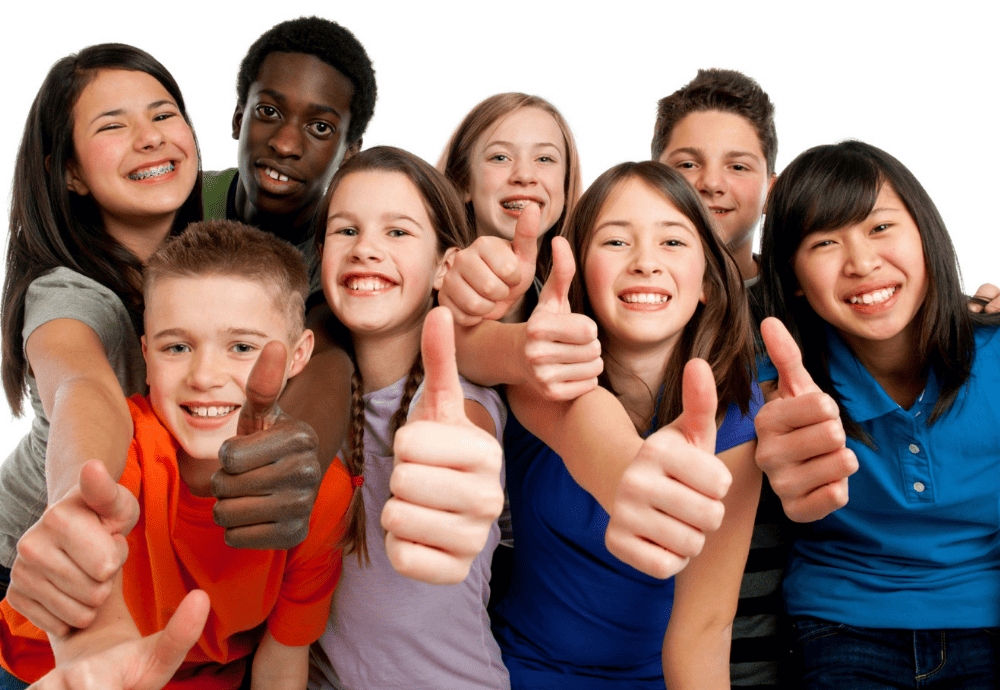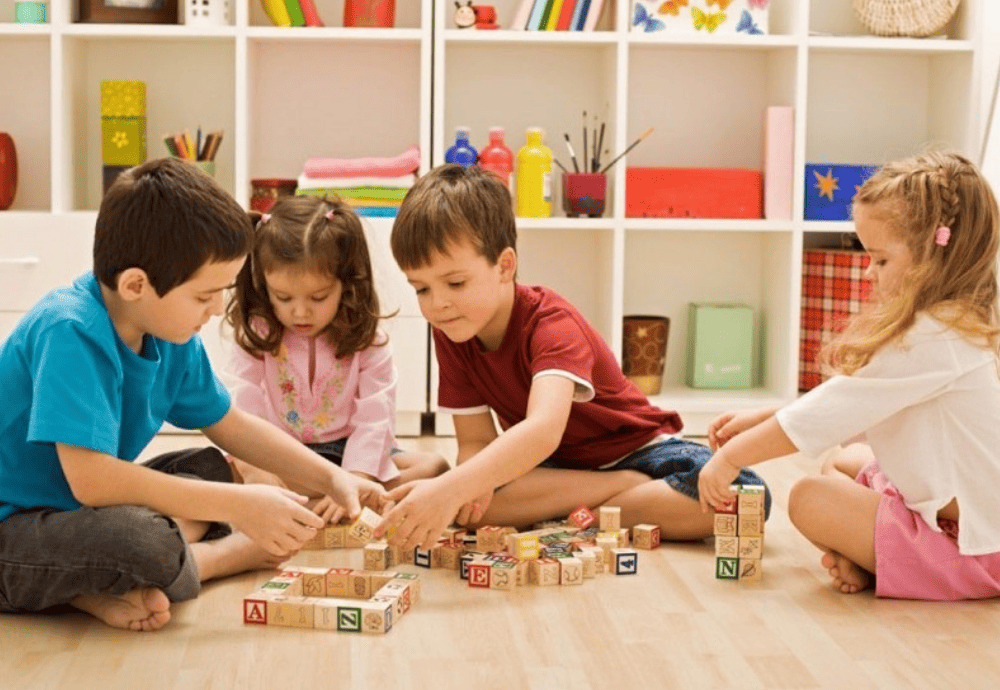Character building activities foster the development of ethical and responsible behavior by teaching individuals about the good values they should have.
It teaches the values associated with:
- Caring about other people
- Honesty
- Responsibility
- Other important traits necessary for upstanding citizens
Table of Contents
In this article, we have character education building games and activities for every age. Each activity tells you what character trait will be learned and/or enforced. Consider the age and personality of those you are serving when you choose your activity or game. Some of the benefits of character building activities are that participants:
- May be more committed to democratic values
- May be more concerned about others
- May be more skilled at resolving interpersonal conflicts
- May engage in more pro-social behavior, such as being helpful and cooperative
Schools and communities also experience the benefits of character education, often seeing:
- Less discipline referrals
- Better academic performance
- Less absenteeism
- A reduction in vandalism
- Fewer incidences of violent behavior
Character Building Activities for Children
With young children, we must constantly mold behavior and teach acceptable attitudes and actions. However, doing so often must be done for older children as well. Teachers and parents must work together to assure that young people develop character traits capable of making them productive and self-confident adults. Doing so helps the achieve success in all areas of their lives, now and in the future.
Character Building Activities for Young Children
Teachers must fill school days with so much “required” learning and it can be difficult to find the time for character building activities. However, as mentioned above, character education improves the lives and learning capabilities of children. Since fun activities are motivational for young children, we have included character building activities that teach character traits while providing entertainment. The activities below do not take a tremendous amount of time and can often be incorporated into recess, snack, or lunch times.
Boost Up Exercise
Children need to learn how to encourage one another. Once a week, use circle time to have kids give compliments to each other. You can direct them to say, “What I like about ______ is . . .” Another idea for older students is to have students write complimentary or thank you notes to each other.
Don’t Push Buttons!
It is important for children to learn to avoid making each other angry, upset, or intentionally causing stress. Help your students identify situations and trigger words defined as button pushing and avoid them. Teach them to verbalize, “You are pushing my buttons.” when necessary.
Growing Grateful
Teach gratefulness with a bulletin board or door decoration with a flower or paper tree. Have students add petals or leaves with jottings about what they are grateful for. You can make this a daily or weekly activity.
Classroom Character Notebook
Create a classroom character notebook with ideas for how to handle anger and maintain a positive outlook. You can also add suggestions for how to build respect for others, show kindness, and display other good character traits. Occasionally review the notebook to reinforce good behavior.
Character Stars
Have kids define good character traits in their own words and then vote on a classmate that displays the positive trait. Each child can only win once and wears a star on their shirt for the school day or week. Additionally, you can create a bulletin board with the stars after the students wear them.
Puppet Show Conflict Resolution
Puppet play is an excellent way to allow students to act out conflicts and how to resolve them. You can also discover interpersonal relationship problems your students are facing and help them resolve them. Let them make their own puppets to enhance this activity.
Walk in My Shoes
Have the children trace their feet on pieces of construction paper. Then have them walk a path composed of the cut footprints while discussing examples of empathy.
Caring in the Classroom
Children benefit from knowing what is expected of them in the classroom environment. Talk about good student character and classroom ethics such as doing your own work, no cheating, and taking turns. Learning such behavior now can translate into good workplace ethics in the future.
Pre-teen Character Building Activities
Middle schoolers often struggle with identifying with their peer group while avoiding peer pressure. This is a time when a young person begins to identify who they are, what they like, and what choices they will make. They also need to begin to understand where they fit in the world socially and politically. Our pre-teen character building activities build both positive values and self-esteem.
Good Citizenship
Most schools require some sort of civics class for middle school students. Pairing what they learn about government, their role in society, and responsibilities and morals helps grow global citizens.
Taking It Back
Provide each student with a small packet of salt, pepper, or sugar and a paper to dump it out on. Then direct them to put all of the contents back into the packet. Explain that just as the contents are hard to put back in the packet, so our words are hard to take back once they are said.
Door to Integrity
Post a reminder on doors that we must use integrity when we leave the classroom. You can list the character traits students should use in one of two words, such as “Honesty,” “Kindness,” and “Others First.”
Help or Hurt
Share a selection of magazines that talk about entertainers or look at social media posts. Talk about what words inspire others and what words have hurtful connotations. You can have them rewrite negative posts and sentences to make them more positive and encouraging.
Pay It Forward
Paying it forward is passing on a kind act done for you to someone else. Discuss with students how this shows an “attitude of gratitude” for what others do for us. Have them look for opportunities to help others.
Peer Pals
To encourage an attitude of service and teach empathy, have students pair with those who have special needs or tutor a classmate in a subject. Switch partners occasionally to keep this activity fresh and interesting. You might want the whole class to work with students in a lower grade on reading or math.
Show and Tell
Set aside a special time to have students share items conveying their culture, individuality, and unique interests and experience. Students learn both diversity and empathy as well as what is truly important to them and to their classmates.
This Is Me
Middle schoolers often struggle with wondering what others think of them and peer pressure. Teach them to stay true to themselves by letting them emphasize and demonstrate their individual strengths in a positive manner.
Teen Character Building Activities
When young people reach high school, it is important to help them make wise choices about who they will choose as friends, what activities they will participate in, and how they can serve others.
Welcome to the Real World
It is important for teens to understand what their responsibilities are compared to a teacher’s so that they can respond appropriately to authority when they work in the real world. In college and on the job, not being able to differentiate between your responsibilities and those of others can cause one many problems. Have students make a list of what they must take care of and what you, the teacher must do, i.e. do homework vs. assign homework.
Bust That Bullying
Bullying is dealt with during the elementary years, but sometimes we forget that it also occurs for teens. Frequently it moves to the digital world. Have students share negative comments they have seen on social media and talk about better ways to share feelings. Set some guidelines, such as not using names so that it doesn’t turn into a bashing and gossiping session.
Make a Difference
Schools and communities have many opportunities for service. Teach teens to help others by finding learning-service opportunities where they can use their talents and interests on a daily or weekly basis. Helping in the cafeteria, washing the front of lockers, painting over graffiti, help improve the appearance of the school and instill pride. Serving food in a homeless shelter or sorting used clothing for a service organization teaches caring for others.
Do the Right Thing
Teens encounter some big problems themselves and also must deal with their peer groups problems, such as depression, abuse, substance abuse, and many others. Help students learn to navigate using role playing in various scenarios. Also help them know when to report and who to report to.
First Impressions
Teach teens one-minute lessons on social skills such as proper etiquette, appropriate and inappropriate touch, and the importance of facial expressions and body language. This will help them in their professional lives and in college, as people often judge us by how we look and act.
What’s My Personality Type
There are many personality quizzes online. Have students work alone to determine their personality types, and then place them in groups so that they can work on these skills. Offer a variety of projects and/or websites to help them.
Talk It Out
Teens spend a great deal of time on their phones and computers and texting has taken the place of verbal communication. Challenge teens to have real-world conversations explaining their points of view and opinions about character traits and social issues. It is important teens learn how to dialog thoughtfully and without being overly emotional.
On Time or Spin the Wheel
Tardiness continues to be an educational and workplace challenge. Encourage teens to be on time to class and create a wheel with consequences. If they are tardy they must spin the wheel. Choices such as telling the class a joke that will make them laugh, reading a love poem, or writing on the board for part of class can teach a lesson in a lighthearted way.
Character Building Games
Games help build character and self-esteem when played in groups as children and teens win and lose and learn how to take turns. Choose one of the following or find one on-line that fits with the needs and ages of your group.
Jenga
This inexpensive block-stacking game uses 54 stacked blocks. Players take turns removing a block from the base of the tower and placing it on top. As the tower becomes more unsteady, you can discuss how life can sometimes become difficult and how we need extra help and/or support from family and friends to keep going. Help participants identify who can help them in times of trouble.
Card Playing
Any card game teaches players how to win and lose and build confidence with increased skill. Additionally, taking turns, strategizing, and rule following are additional skills needed for life and good character learned through card playing.
Triangle Tagging
Three people hold hands to make a triangle consisting of one Captain, two bodyguards keeping the Captain safe. “It” goes around the circle trying to tag the Captain, however, “It” cannot go under or through the joined hands. Play the first round for ten seconds, and then make the time in each round a few seconds longer. If the Captain gets tagged, everyone switches places so that all players have a chance to play all three roles. After playing, discuss what it felt like to play each role and how this is like relationships and friendships in real life.
Chutes and Ladders
One of the first and simplest childhood games, Chutes and Ladders teaches young children how good choices result in moving up a ladder and bad choices sliding down a chute. This game is the first of many played by children to build self-esteem and confidence. Make sure children see this as a metaphor for life, where good choices lead up and bad choices hold one back. Make sure they understand that the dice and spinner in games determine where you land, but life is for real and based upon good choices.
Friend and Foe
This fun, but chaotic game and the lesson it teaches will be remembered by players. This game works best in a group of twelve or more players. Each person chooses a friend and a foe in the group without telling who they are. When the game begins, the goal is to keep one’s friend between oneself and one’s foe. Play for a while and then explain that in our lives, we meet people who care about us and people who do not. The moves they make in their lives affect ours. Identify the foes as those who may use drugs and encourage us to do so, bullies, and those who abuse us in some way. Have them identify people or groups that act as protectors. This game can serve to prepare them for future challenges to their character.
Conclusion
Activities for building student character in the school community enhance not only a student’s life, but also the entire school environment. Many of our character education activity ideas can be worked seamlessly in to class time, making character education a part of daily classroom participation. Planned character education activities and games shape students’ behavior and can make a difference in the years to come both in the lives of students and those with whom they work and live. Make a commitment to use one of more of our character building activities with your students or peers.
Susan majored in English with a double minor in Humanities and Business at Arizona State University and earned a Master’s degree in Educational Administration from Liberty University. She taught grades four through twelve in both public and private schools. Subjects included English, U.S. and world history and geography, math, earth and physical science, Bible, information technologies, and creative writing.
Susan has been freelance writing for over ten years, during which time she has written and edited books, newspaper articles, biographies, book reviews, guidelines, neighborhood descriptions for realtors, Power Point presentations, resumes, and numerous other projects.




